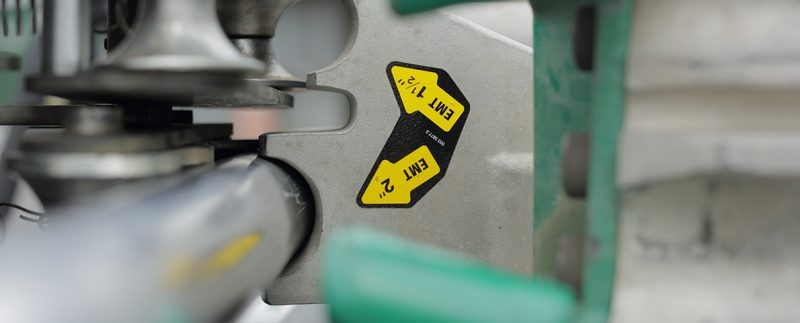If you’ve decided to buy aluminum electrical metallic tubing (EMT) for the first time from American Conduit, we want you to know we’re passionate about client satisfaction. Our experts will be glad to answer all your questions. One question we often receive from first-time customers concerns choosing the correct diameter and thickness.
 Making the right decision is crucial to ensure the effectiveness, safety, and longevity of electrical installations. EMT is commonly used to protect and route electrical wires and cables in various applications, ranging from residential to commercial and industrial settings. Here’s a look at what to keep in mind.
Making the right decision is crucial to ensure the effectiveness, safety, and longevity of electrical installations. EMT is commonly used to protect and route electrical wires and cables in various applications, ranging from residential to commercial and industrial settings. Here’s a look at what to keep in mind.
Understand Your Application Requirements
Begin by assessing the specific requirements of the electrical installation project. Consider factors such as the type of building (residential, commercial, industrial), the number of conductors, the length of the conduit run, and the environmental conditions (indoor vs. outdoor, exposure to moisture or corrosive substances).
Consult Applicable Codes and Standards
Familiarize yourself with electrical codes, standards, and regulations governing conduit sizing and installation. Codes such as the National Electrical Code (NEC) provide guidelines for conduit sizing based on the number and size of conductors and the maximum fill capacity of the conduit.
Calculate Conduit Fill Capacity
Determine the total cross-sectional area of the conductors installed within the conduit. Use this information to calculate the conduit fill capacity and ensure compliance with code requirements. Overcrowding the conduit can lead to overheating, voltage drop, and potential safety hazards.
Consider Future Expansion
When selecting the diameter of the aluminum EMT, anticipate future expansion or additions to the electrical system. Choosing a slightly larger conduit size than required can accommodate future wiring upgrades or additions without costly modifications.
Evaluate Space Constraints
Assess the available space for installing the conduit, including any obstacles, obstructions, or clearance requirements. Ensure that the selected diameter of the aluminum EMT can be accommodated within the available space without impeding access or interfering with other building components.
Select Thickness Based on Application
Aluminum EMT is available in different thicknesses, commonly called “schedule” or “wall thickness.” The thickness of the conduit walls affects their strength, durability, and resistance to mechanical damage. Choose a thickness suitable for the specific application and environmental conditions.
Consider Environmental Factors
Consider environmental factors such as exposure to moisture, corrosive substances, temperature fluctuations, and physical impact. In corrosive environments, thicker-walled aluminum EMT may be preferable to provide enhanced protection against corrosion and mechanical damage.
Consult Manufacturer Specifications
Refer to the manufacturer’s specifications and recommendations for the specific type and grade of aluminum EMT. At American Conduit, we provide detailed information on conduit dimensions, wall thicknesses, material properties, and compatibility with fittings and accessories.
Seek Professional Advice if Needed
If you’re unsure about the appropriate diameter and thickness for your aluminum EMT application, don’t hesitate to consult with a qualified American Conduit professional. We can provide expert advice and guidance based on their experience and knowledge of local building codes and industry best practices.
Following these guidelines and consulting with industry professionals, you can choose the most appropriate aluminum EMT for your electrical installation project, ensuring reliable performance, safety, and compliance with electrical codes and standards. When you buy aluminum electrical metallic tubing from American Conduit, we’ll ensure you get exactly what you need for your specific application. Learn more by using our online form or calling 1-800-334-6825.

